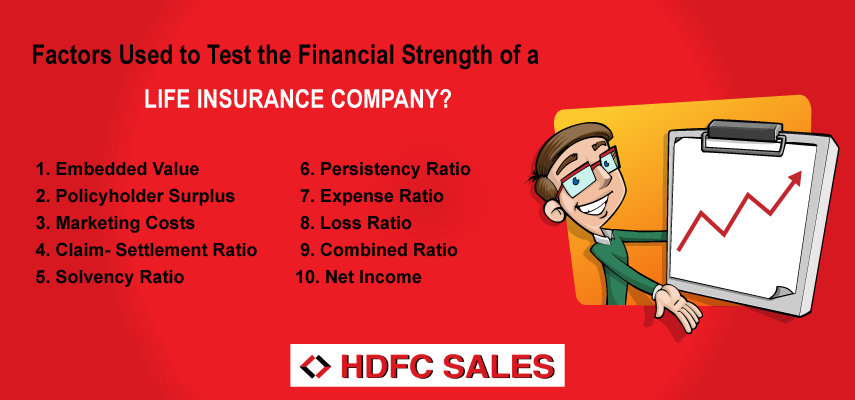Buying a Life Insurance Policy is one of the most important financial decisions you make. In the event of death, disease or disability, a Life Insurance Policy ensures your financial goals are met, and liabilities paid off. Your Life Insurance Policy’s claim payout helps your family meet their needs in your absence.
However, it is not enough to know only the benefits of your life insurance policy. It is also essential to know how capable your Life Insurance Company is of paying your claim.
Where can you find financial information about Life Insurance Companies?
- All Life Insurance companies display their financial information on their official website. The website’s investor relations’ section will have the yearly financials of the company.
- The IRDAI (Insurance Regulatory and Development Authority of India) is a useful resource for comparing the financials of different Life Insurance companies.
The IRDAI displays the monthly business figures of all Life Insurance companies on its website. They maintain a year-wise record of all business numbers.
- In India, CRISIL rates Life Insurance companies.
CRISIL uses parameters like the product mix, underwriting guidelines, reinsurance policy, distribution channels, and investment quality to rate Life Insurance companies. Other criteria include the technology used and the risk management strategy.
Factors that help you determine the financial stability of a Life Insurance Company
Observe the trend of the below metrics over at least five years to get a clear picture of the Life Insurance company’s financial strength.
The IRDAI requires all Life Insurance companies to have a paid-up capital of Rs.1 Billion.
1. Embedded Value
Life Insurance products have long premium payment terms. It’s this future income that determines a Life Insurance company’s profitability.
The Embedded Value is the total of the future profits from the current business and the shareholder’s net worth.
When the insurance company generates more business, its embedded value increases if the costs and the persistency ratio don’t fluctuate.
2. Policy-Holder Surplus
The amount that remains after the Life Insurance company pays out all outstanding claims is the Policy-holder Surplus. It is a measure of the insurance company’s net worth.
The higher the Policyholder Surplus, the higher is the company’s net worth.
3. Net Income
The Net Income refers to the total earnings minus the expenses. If the Net Income is positive, the Life Insurance company has made a profit in that year.
4. Marketing Costs
The insurance company’s Marketing Costs depict the price paid to get clients. The lower the amount, the easier it is for the company to sell its products.
Ratios used to test a Life Insurance Company’s financial strength
Financial evaluation is incomplete without the use of “ratios”. Ratios refer to the mathematical relationship between two variables.
1. Claim Settlement Ratio
The Claim Settlement Ratio is a percentage of the total claims settled by an insurance company versus the claims incurred.
The most-reputed insurers have the highest Claim Settlement Ratios.
2. Solvency Ratio
The Solvency Ratio shows how capable the insurance company is of paying its liabilities if it goes bankrupt.
IRDAI requires that all Life Insurance companies must have a Solvency Ratio of 150%. Anything above 150% speaks well about the insurance company.
3. Expense Ratio
The Expense Ratio tells you how much the Life Insurance company spends compared to what it earns.
If the Life Insurance company’s Expense Ratio is less than 100%, the company is profitable.

4. Persistency Ratio
The Persistency Ratio measures how often customers renew their HDFC Life Insurance policies. Divide the number of premium-paying policyholders by the net active policyholders. Multiply the figure by 100 to get the Persistency Ratio as a percentage.
The higher the Persistency Ratio, the greater is the Life Insurance company’s ability to retain clients. It shows how much faith customers have in the company.
5. Loss Ratio
Divide the losses incurred by the insurance company by the total premiums collected. You will get the Loss Ratio. It also measures the company’s profitability.
If the value is above 100%, the insurance company isn’t making a profit.
6. Combined Ratio
To calculate the Combined Ratio, add the company’s losses, expenses, claims and dividends paid. Divide the value by the total premiums collected.
The Combined Ratio gives you the company’s total outflow. If the value of the Combined Ratio is below 100, the company has made a profit. If the ratio is above 100%, it means that the insurance company pays out more in claims than receives as premiums.
Disclaimer: HDFC Sales Private Limited, Registered office: 4th Floor, Wing-A, HDFC House, 165-166, Backbay Reclamation, H.T. Parekh Marg, Churchgate, Mumbai – 400020. CIN: U65920MH2004PTC144182; Email: customercare@hdfcsales.com; Toll Free: 1800 266 3345; website: www.hdfcsales.com; IRDAI Reg. No. CA0080.





